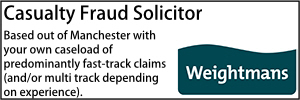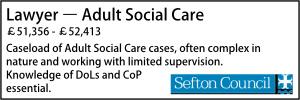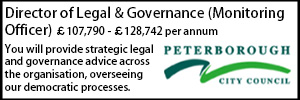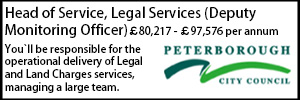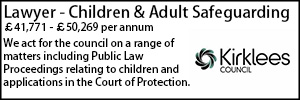On close inspection
Earlier this year the Court of Appeal issued a key ruling on highway inspections and the budgetary pressures councils are under. Peter Wake reports.
In the case of Wilkinson v City of York Council the Court of Appeal ruled that where the frequency of inspection of a highway was inadequate such that it could not be said that the highway authority had taken such care as was reasonably required to ensure the highway was not dangerous, it was irrelevant that the frequency had been set due to budgetary issues.
Facts
The claimant fell from her bike in May 2006 when the front wheel hit a pothole in the road. She brought a damages claim. Section 41 and causation issues were argued but the claim centred on the council's statutory defence under section 58 of the Highways Act 1980. The prescribed frequency of inspection under the council‟s code was annual. The council inspected the road approximately ten months prior to the accident and no defect was recorded. Again, this was not seriously disputed. Rather the claimant's case was that the frequency of inspection was inadequate because the national code of practice suggested the road was of a type that ought to have been inspected every three months. The council's case was that the deviation from the national code was a matter of limited manpower and financial resources. The deviation was not based on any risk assessment as the national code suggested it ought to be.
The claimant was successful before the District Judge who concluded that the frequency was inadequate. The council appealed successfully to the Circuit Judge who held that insufficient heed had been given to the financial considerations which led the highway authority to adopt the programme that it did. In his view resources were "always a factor" and the court "should be slow to reject the evidence … that resources did not permit a more frequent inspection". The claimant appealed successfully to the Court of Appeal.
Court of Appeal
The court accepted that the national code was not a document that carried the force of law. However, on the evidence given at trial (which suggested reasonably heavy pedestrian traffic) it was open to the District Judge to conclude than an annual system of inspection was inadequate. Financial considerations were not a factor when looking at whether the council had done what "was reasonably required". Under section 58 this required "an objective judgment based on risk"; per Toulson LJ, "Section 58 was designed simply to afford a defence to a claim for damages brought against a highway authority which was able to demonstrate that it had done all that was reasonably necessary to make the road safe for users, not an authority which decided that it was preferable to allocate its resources in other directions because other needs were more pressing than doing what was reasonably required to make the roads safe" (paragraph 35).
Comment
It goes without saying that as a general rule a highway will be in better condition the more frequently it is inspected. Accordingly, by definition the issue of resources cannot be a total irrelevance when considering the general issue of highway maintenance. The salient point is that where it is argued that a system of inspection is inadequate in its frequency and the highway authority relies on a section 58 defence, the allocation of the council‟s resources will not fall to be considered when deciding whether the council has done what is reasonably required to ensure that the highway was not dangerous. Highway authorities would be well advised to ensure that their inspection frequencies are set following a cogent process of risk assessment based on locality, traffic levels and other relevant factors such that any deviation from the national code of guidance is readily explicable.
On a separate but related point is the duty under section 41(1A) to ensure safe passage along a highway is not endangered by ice or snow. This duty is one of "reasonable practicability‟ and will encompass policy considerations and factors relating to financial and manpower resources. We have been seeing reported cases on section 41 and section 58 for many years. Whilst, in contrast to these sections of the Act, section 41(1A) is in its infancy, it has now been in force since 31 October 2003 and we still have little reported authority. This presumably relates to both the nature of the duty and the perception (and reality) that such claims are difficult to win
Peter Wake
is a partner at Weightmans. He can be contacted on 0151 242 6866
or by email at
- Details
Earlier this year the Court of Appeal issued a key ruling on highway inspections and the budgetary pressures councils are under. Peter Wake reports.
In the case of Wilkinson v City of York Council the Court of Appeal ruled that where the frequency of inspection of a highway was inadequate such that it could not be said that the highway authority had taken such care as was reasonably required to ensure the highway was not dangerous, it was irrelevant that the frequency had been set due to budgetary issues.
Facts
The claimant fell from her bike in May 2006 when the front wheel hit a pothole in the road. She brought a damages claim. Section 41 and causation issues were argued but the claim centred on the council's statutory defence under section 58 of the Highways Act 1980. The prescribed frequency of inspection under the council‟s code was annual. The council inspected the road approximately ten months prior to the accident and no defect was recorded. Again, this was not seriously disputed. Rather the claimant's case was that the frequency of inspection was inadequate because the national code of practice suggested the road was of a type that ought to have been inspected every three months. The council's case was that the deviation from the national code was a matter of limited manpower and financial resources. The deviation was not based on any risk assessment as the national code suggested it ought to be.
The claimant was successful before the District Judge who concluded that the frequency was inadequate. The council appealed successfully to the Circuit Judge who held that insufficient heed had been given to the financial considerations which led the highway authority to adopt the programme that it did. In his view resources were "always a factor" and the court "should be slow to reject the evidence … that resources did not permit a more frequent inspection". The claimant appealed successfully to the Court of Appeal.
Court of Appeal
The court accepted that the national code was not a document that carried the force of law. However, on the evidence given at trial (which suggested reasonably heavy pedestrian traffic) it was open to the District Judge to conclude than an annual system of inspection was inadequate. Financial considerations were not a factor when looking at whether the council had done what "was reasonably required". Under section 58 this required "an objective judgment based on risk"; per Toulson LJ, "Section 58 was designed simply to afford a defence to a claim for damages brought against a highway authority which was able to demonstrate that it had done all that was reasonably necessary to make the road safe for users, not an authority which decided that it was preferable to allocate its resources in other directions because other needs were more pressing than doing what was reasonably required to make the roads safe" (paragraph 35).
Comment
It goes without saying that as a general rule a highway will be in better condition the more frequently it is inspected. Accordingly, by definition the issue of resources cannot be a total irrelevance when considering the general issue of highway maintenance. The salient point is that where it is argued that a system of inspection is inadequate in its frequency and the highway authority relies on a section 58 defence, the allocation of the council‟s resources will not fall to be considered when deciding whether the council has done what is reasonably required to ensure that the highway was not dangerous. Highway authorities would be well advised to ensure that their inspection frequencies are set following a cogent process of risk assessment based on locality, traffic levels and other relevant factors such that any deviation from the national code of guidance is readily explicable.
On a separate but related point is the duty under section 41(1A) to ensure safe passage along a highway is not endangered by ice or snow. This duty is one of "reasonable practicability‟ and will encompass policy considerations and factors relating to financial and manpower resources. We have been seeing reported cases on section 41 and section 58 for many years. Whilst, in contrast to these sections of the Act, section 41(1A) is in its infancy, it has now been in force since 31 October 2003 and we still have little reported authority. This presumably relates to both the nature of the duty and the perception (and reality) that such claims are difficult to win
Peter Wake
is a partner at Weightmans. He can be contacted on 0151 242 6866
or by email at






